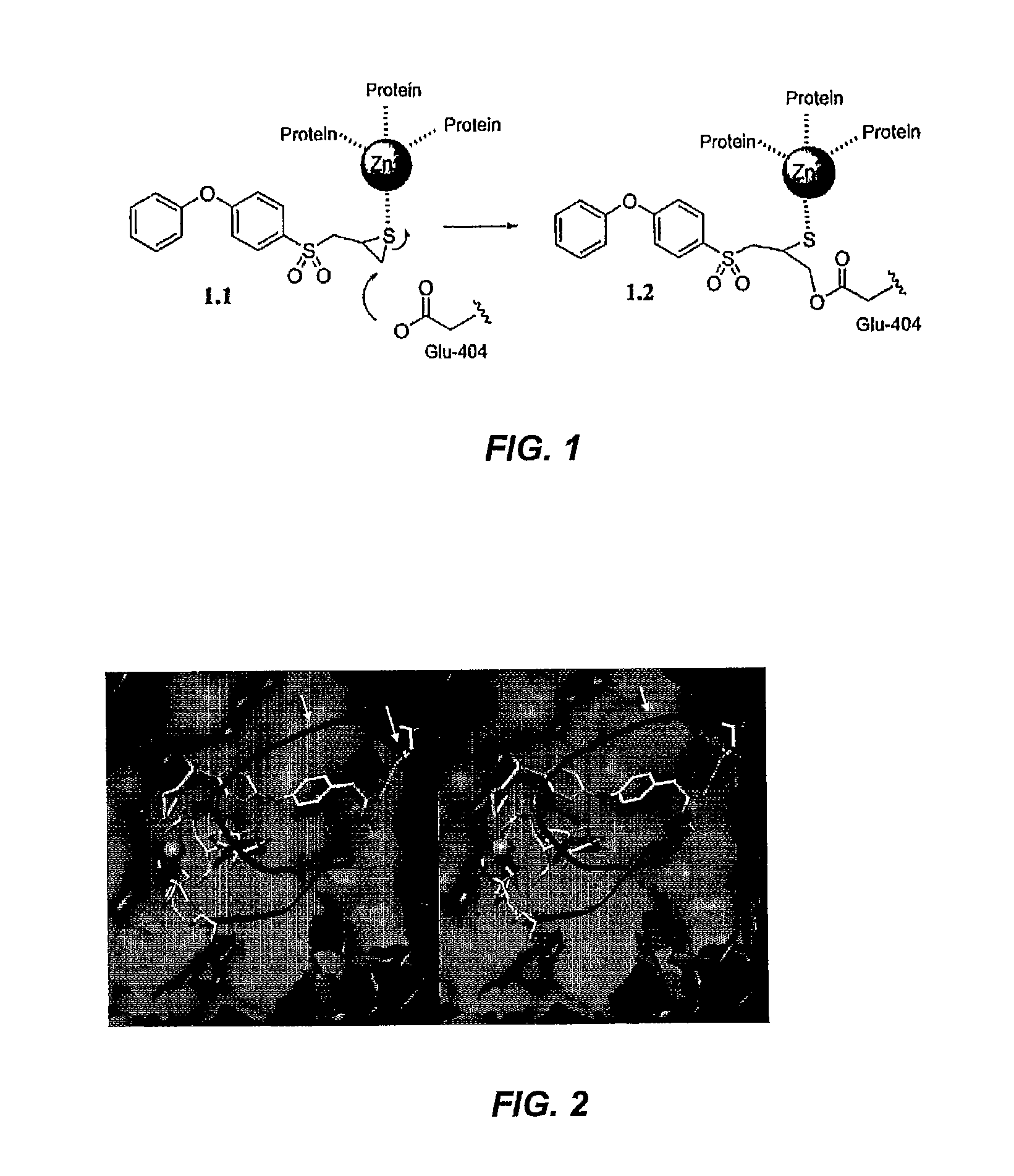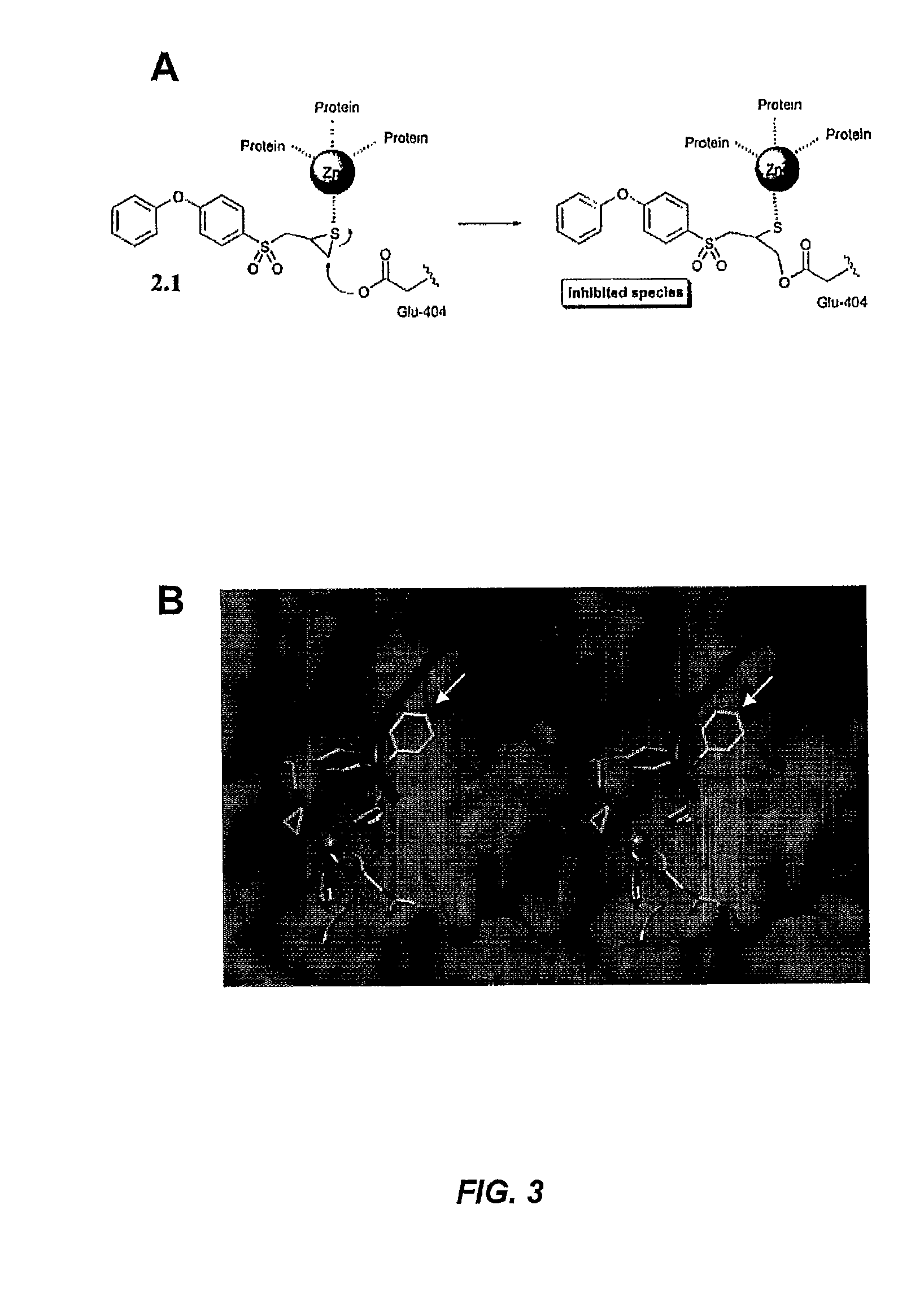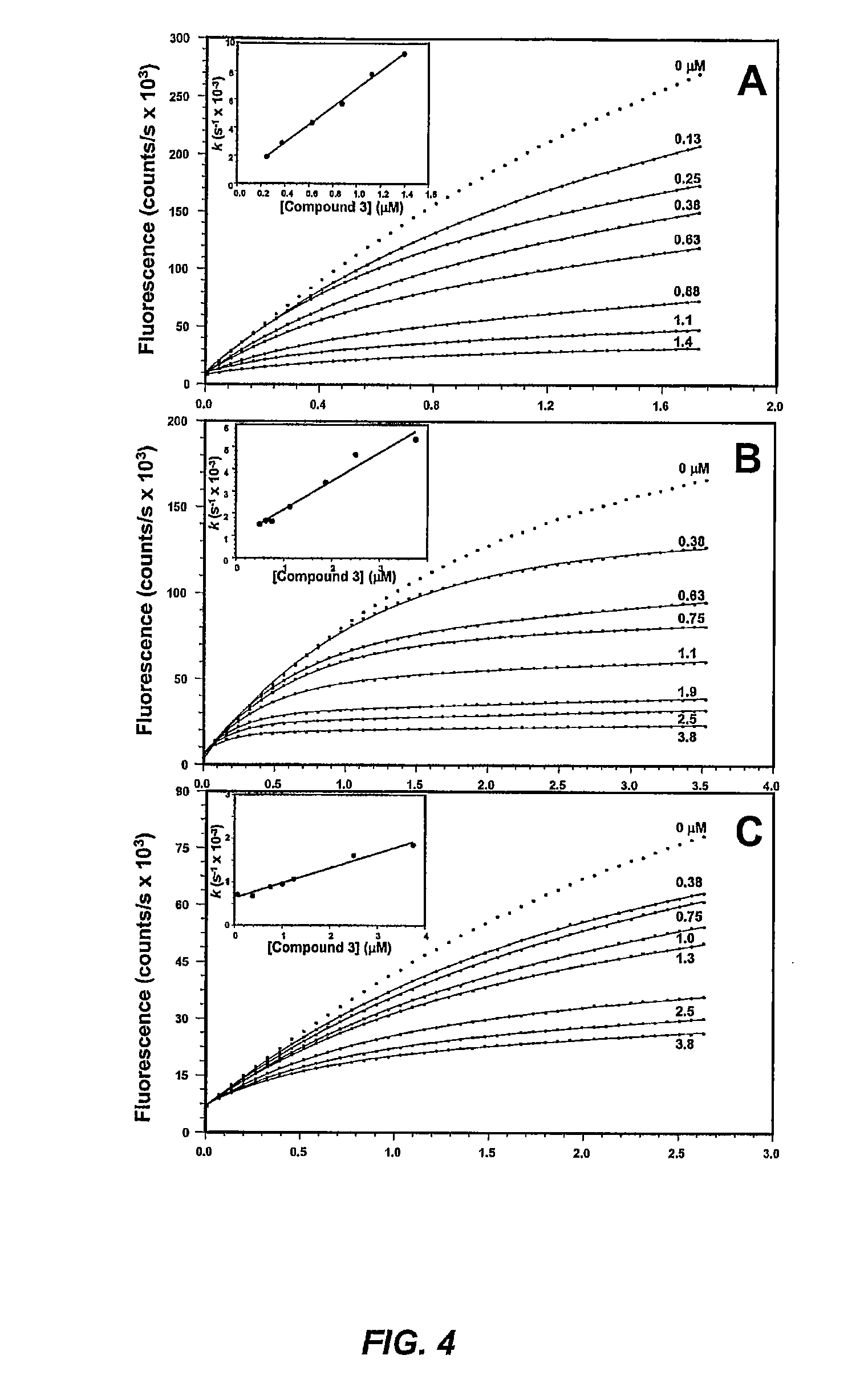Inhibitors of matrix metallaproteinases
a technology of matrix metallaproteinase and inhibitors, which is applied in the direction of biocide, drug composition, immunological disorders, etc., can solve the problem that inhibitors of mmps are often toxic to the hos
- Summary
- Abstract
- Description
- Claims
- Application Information
AI Technical Summary
Problems solved by technology
Method used
Image
Examples
example 1
Design, Synthesis, and Evaluation of a Mechanism-Based Inhibitor for Gelatinase A
[0336]The first mechanism-based inhibitor for MMPs have been previously described (J. Am. Chem. Soc. 2000, 122, 6799-6800), which in chemistry mediated by the active site zinc ion selectively and covalently inhibits MMP-2, MMP-3 and MMP-9. Computational analyses indicated that this selectivity in inhibition of MMPs could be improved by design of new variants of the inhibitor class. The syntheses of methyl 2-(4-{4-[(2-thiiranylpropyl) sulfonyl]phenoxy}phenyl)-acetate (1.3) and 2-(4-{4-[(2-thiiranylpropyl) sulfonyl]phenoxy}phenyl)acetic acid (1.4) are reported herein. The results of this Example show that compound 1.3 serves as a mechanism-based inhibitor exclusively for MMP-2. This molecule should prove useful in delineating the functions of MMP-2 in biological systems.
[0337]
[0338]Matrix metalloproteinases (MMPs) are zinc-dependent endopeptidases with important pathological and physiological functions (M...
example 2
Potent Mechanism-Based Inhibitors For Matrix Metalloproteinases
[0358]Matrix metalloproteinases (MMPs) are zinc-dependent endopeptidases that play important roles in physiological and pathological conditions. Both gelatinases (MMP-2 and MMP-9) and membrane-type 1 MMP (MMP-14) are important targets for inhibition since their roles in various diseases, including cancer, have been well established. This Example describes a set of mechanism-based inhibitors that show high selectivity to gelatinases and MMP-14 (inhibitor 2.3) and to only MMP-2 (inhibitors 2.5 and 2.7). These molecules bind to the active sites of these enzymes, initiating a slow-binding profile for the onset of inhibition, which leads to covalent enzyme modification. The full kinetic analysis for the inhibitors is reported. These are nanomolar inhibitors (Ki) for the formation of the non-covalent enzyme-inhibitor complexes. The onset of slow-binding inhibition is rapid (kon of 102 to 104 M−1s−1) and the reversal of the pro...
example 3
Experimental Section:
[0472]Synthesis—1H and 13C NMR spectra were recorded on either a Varian Unity Plus 300 MHz or a Varian INOVA 500 MHz spectrometer. Chemical shifts are reported in from tetramethylsilane on the 6 scale. Mass spectra were recorded on a JEOL JMSAX505HA and a Finnigan-MAT 8430 high resolution magnetic sector mass spectrometers. For silica gel column chromatography, EMD Silica gel 60 was employed. Thin-layer chromatography was performed with Whatman 0.25 mm silica gel 60-F plates. All other reagents were purchased from Aldrich Chemical Company, Lancaster, or Across Organics.
Compounds of Scheme 5.
[0473]Compound 2a (R1═R2═H). n-BuLi (10.7 mL, 2.5 M in hexane) was added to a solution of 4-bromophenyl phenyl ether (4.7 mL, 26.8 mmol) in anhydrous THF (120 mL) with vigorous stirring at −78° C. After stirring for 30 minutes, sulfur (0.86 g, 26.8 mmol) was added to the reaction mixture. The mixture was stirred for 0.5 hours, while temperature was raised to 0° C. After coole...
PUM
| Property | Measurement | Unit |
|---|---|---|
| weight:weight | aaaaa | aaaaa |
| particle sizes | aaaaa | aaaaa |
| particle sizes | aaaaa | aaaaa |
Abstract
Description
Claims
Application Information
 Login to View More
Login to View More - R&D
- Intellectual Property
- Life Sciences
- Materials
- Tech Scout
- Unparalleled Data Quality
- Higher Quality Content
- 60% Fewer Hallucinations
Browse by: Latest US Patents, China's latest patents, Technical Efficacy Thesaurus, Application Domain, Technology Topic, Popular Technical Reports.
© 2025 PatSnap. All rights reserved.Legal|Privacy policy|Modern Slavery Act Transparency Statement|Sitemap|About US| Contact US: help@patsnap.com



